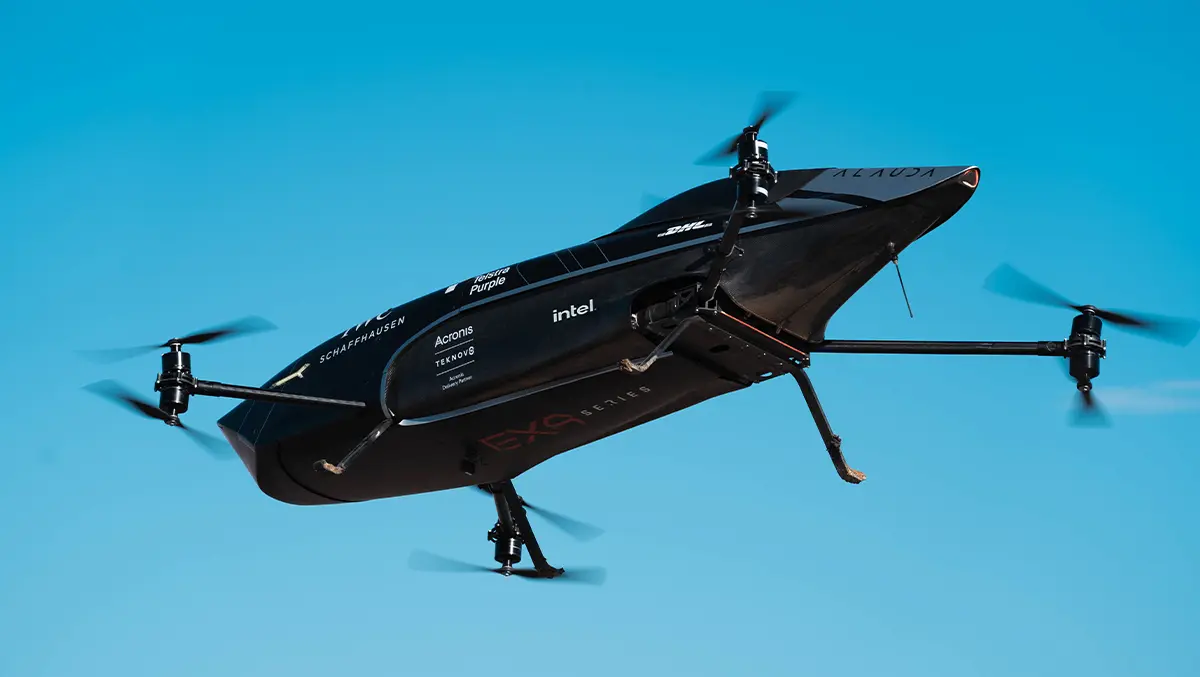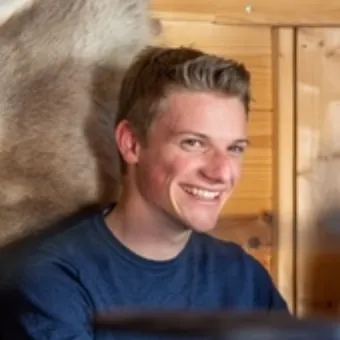
Airspeeder flying car races set the pace for the next mobility revolution
The future of mobility is beginning to look a lot like the dreams of past generations. In the remote salt flats of South Australia, electric flying cars are already racing, and the company behind them, Airspeeder, is convinced this spectacle will help accelerate a revolution in urban transport.
"We have been waiting a really, really long time," Matt Pearson, Airspeeder's CoFounder & Chief Executive Officer, told to the audience at Dell Technologies World in Las Vegas. "Even Henry Ford said the car and the plane will merge. I just don't know when it's going to happen, but it will happen."
That moment, according to Airspeeder, is now. Rather than build air taxis for everyday commutes, the company is betting that motorsport will be the catalyst for technological breakthroughs and public acceptance of eVTOLs - electric vertical take-off and landing vehicles.
"The racetrack is a microcosm of the cities of the future," explained Jack Withinshaw, CoFounder & Chief Commercial Officer of Airspeeder. "We figured if we could create a Formula One for flying cars and use that to turbocharge the industry, that's probably the right way to do it. We're having a hell of a lot of fun."
The approach echoes the birth of the motorcar industry. "When Jack and I look back at history, all those mobility technology companies that still matter today were racing," Pearson said. "Racing drove the awareness and acceptance and adoption. That's what's really holding us back now - people going, 'Yeah, I want that. I'm comfortable with that.'"
Innovation in the Skies
Airspeeder's racing series is more than just a spectacle. The company has partnered with technology giants such as Dell, Intel, and Telstra to build not only the vehicles, but the supporting infrastructure - from 5G networks and cyber security to augmented reality and edge computing. "We thought when we built the vehicle, that was going to be hard. Whoa, no, it was the infrastructure and the layers that had to be built and layered on top of each other to bring this to life," Withinshaw said.
The result is a complex web of technology: "From design, engineering, and field operations - where pilots are patrolling these things from ground stations using precision workstations - all the way through to engineering control stations and race control, we had to build everything ourselves just to get racing," he added.
As in all top-tier motorsport, the action is underpinned by data. "We're taking as much data off them as a Formula One car," said Pearson. "The complexities are in the air. They all have to be lightweight. Everything has to come about the edge, really."
The racing series is also an incubator for artificial intelligence, particularly in the realm of safety. Withinshaw described Airspeeder's "AI force field", a digital safety net that prevents mid-air collisions. "We want close combat racing, so we're going to use collision avoidance as the key," he explained. "If vehicle A comes in at a certain angle, vehicle B will be forced to go in a certain direction. You can't do that on the ground, but you can do it in 3D space."
He said the goal is "to make it safe, secure, and exciting"- something that will be essential for everyday urban air mobility in the future.
Small Team, Big Ambitions
The scale of Airspeeder's ambition belies the company's size. "We're a small team," Withinshaw noted in a one-to-one briefing. "Incredible talent from Formula One, Boeing, McLaren, Ferrari - it's a collective of about 20 or so, plus agencies and contractors that we bring on for racing." Funding has come from founder Matt Pearson's entrepreneurial successes, including space tech firm Fleet, as well as venture capital and revenue from technology partnerships.
Airspeeder's unique business model allows it to test and commercialise technology before wider public adoption. "Not only are we regulatorily allowed to race, but the racetracks are benign environments," said Withinshaw. "We can commercialise the tech, and there's actual data coming out to our partners."
The company's racing series has so far run four events, mostly internal, with plans to expand globally. "We're now engaging Formula One teams from different countries, the UK, Italy, Japan, Korea - to take a vehicle or two, ingest some of their technology," Withinshaw revealed. "What we're doing is exactly what happened 120 years ago. We're going racing to evolve technology really quickly."
Pushing the Boundaries of Regulation
One of the major challenges facing Airspeeder is the heavily regulated nature of airspace. "It's a regulated space, but there are progressive laws coming through," Withinshaw said. "The aviation authorities are really quite progressive in Australia. We've got a lot of space. It's a beautiful place to fly. But we want to take this out of Australia, into the Middle East, into America, and start turning it into the global series it was always meant to be."
TechDay asked about the potential for private eVTOLs, Withinshaw predicted a timeframe of five to ten years, depending on the region and regulatory progress. "Until then, we can go racing, and we can work on private racing clubs to bring that to life," he said. When they do reach the market, Airspeeder's vision is for something "like a Ferrari in the sky."
A Glimpse of the Future
Despite the technical and regulatory hurdles, Airspeeder is forging ahead, creating what Pearson calls "the most exciting racing the world's ever seen." The thrill is not lost on audiences: "The most rewarding thing for me is seeing an audience, for the first time, be standing 30 metres away from the start line, and seeing everything take off in front of them," he said.
For Withinshaw, the dream is as much about inspiring future generations as it is about transport. "We want everyone to have a flying car, but we believe to get there, you need to start in an area that is regulatorily allowed, where you can evolve technology and aren't just burning cash," he said.
As the technology advances with each race, so does the vision. "The impossible is possible," Pearson said. "And that's what entrepreneurship is all about"


